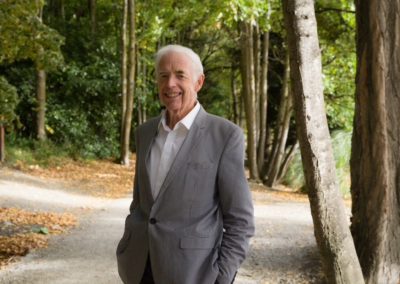Every year in New Zealand, around 9000 people have a stroke, and as our population ages, that number is expected to rise. In many cases, those affected never recover fully and disabilities can last decades. This is why BRNZ researchers have been working on all aspects of stroke – from preventing them via education, through to developing novel therapies.
University of Otago’s Dr Andrew Clarkson is interested in processes that occur at a cellular level, during and after a stroke. “Adult brains show a limited capacity for neural repair,” he says. “We know neurorehabilitation can promote partial recovery, but the actual cellular repair mechanisms have not been well-defined.”
Andrew has been working to change that for more than a decade, because to him, understanding these repair mechanisms could be the key to developing better therapies. While based at UCLA in 2010, Andrew and his colleagues had a breakthrough. Working with mice models, they showed that, several days after a stroke, there is an excess of a neurotransmitter called GABA in the brain. GABA’s job is to regulate how excitable the brain gets, so it plays a vital role in maintaining brain health. But if there’s too much GABA – as there is post-stroke – it can silence the brain’s networks of activity. Andrew believes that this is an intrinsic mechanism gone wrong, “The brain is producing GABA as a way to minimise the spread of damage, but somehow, it just doesn’t turn itself off. We think this is one of the main reasons people don’t recover well from stroke.”
In that same study, Andrew’s team found that if they could interrupt the runaway process, and normalise levels of GABA, they could recover some of the brain’s cell function. In effect, if they could find drugs that better target specific parts of the receptors, they could amplify the brain’s natural self-protect mechanism. “We felt that this approach would give us better outcomes than previous drug trials,” he says, but this was an entirely new way to look at recovery.
When Andrew returned to New Zealand, he assembled an international team of researchers. All of the animal work was done at the University of Otago, with initial drug compound tested at the University of Sydney. A team at Monash University examined how the drugs crossed the blood-brain barrier, and at Denmark’s Aarhus University, electrophysiology was performed on brain tissue. The team published their results in a recent issue of Journal of Cerebral Blood Flow & Metabolism.
To date, they’ve screened fifteen drugs, systematically testing each one to check its effectiveness on their target receptors. “There are a few candidates,” says Andrew. “We think the most promising drug actually targets receptors found both in the brain and on immune cells.” This is unique – a double-whammy of cell protection – and it could buy stroke sufferers more time to recover brain function. The saying among stroke researchers is, “Time is brain cells,” so although it’s still early days, Andrew’s work could prove to be very valuable indeed.



